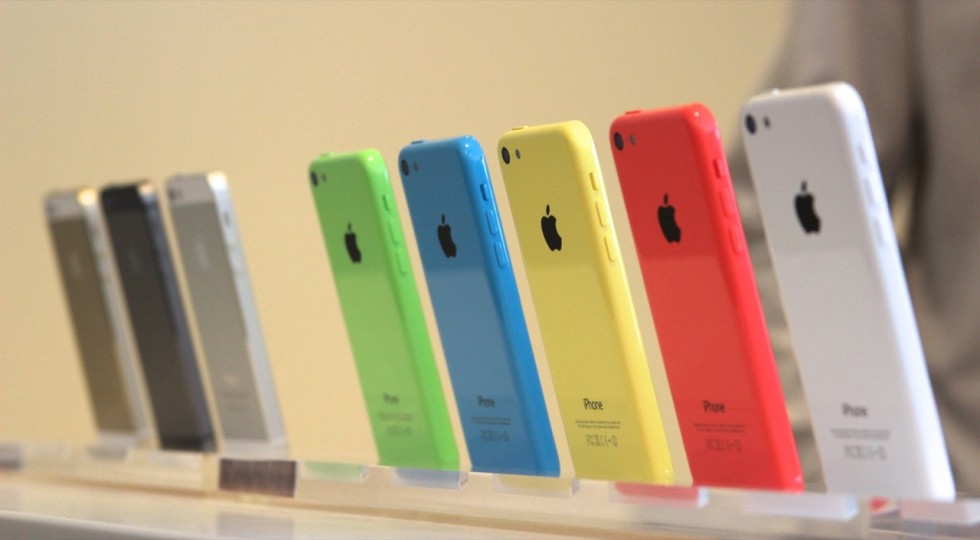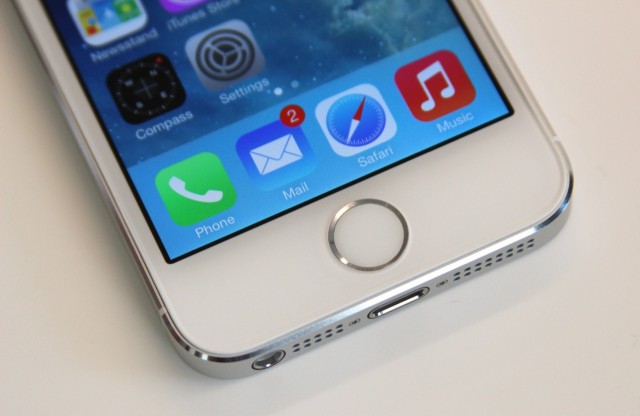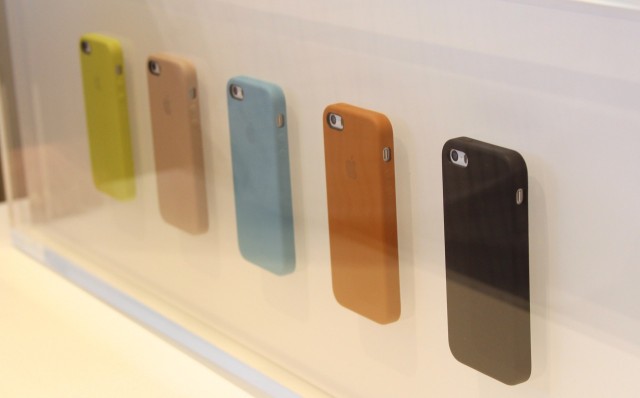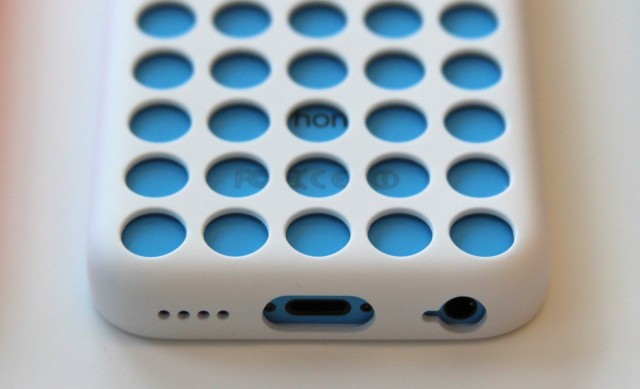
Apple took to the stage of its town hall in Cupertino today to unveil not one but two new iPhones for the fall, the multi-colored iPhone 5C and the new flagship iPhone 5S. We'll be giving both phones the review treatment when they're out, but in the meantime Apple let us spend a little hands-on time with them (and some of their new features) ahead of their launch.
The iPhone 5S: A design refined
If you've already held an iPhone 5, you know exactly what it's like to hold an iPhone 5S. The size, weight, and build quality all feel exactly the same as last year's flagship. Observations that the iPhone 5 felt "almost too thin" have faded with familiarity, but if you're carrying the old glass-backed iPhone 4 or iPhone 4S, the feel of the iPhone 5S is still surprising. Every measurement, right down to the 3.95 ounce weight and 0.30-inch thickness, is identical to the iPhone 5.
A pair of visual cues will help you distinguish the 5S from the older iPhone 5, and both are related to new hardware features. First is the Home button, which sheds the small square symbol it has always had (and still has on the iPhone 4S and 5C) and picks up a shiny stainless steel ring. Embedded in the new button beneath a sapphire crystal cover is the phone's new fingerprint sensor, and the ring is used to detect that your finger is resting on the Home button (which is still clickable, just as it has always been).
-
The iPhone 5S looks and feels like an iPhone 5—with a twist.Andrew Cunningham
-
The opening for the flash is now oval to accommodate both LEDs.Andrew Cunningham
-
The cases are lined with a soft microfiber.Andrew Cunningham
-
The gold, "space-gray," and white iPhone 5Ses all lined up together.Andrew Cunningham
-
Up close with the gold-backed 5S.Andrew Cunningham
An Apple representative walked me through registering my fingerprint with the phone. It's a multi-step process that involves tapping the Home button over and over again from many different angles until the software is satisfied that it can recognize your fingerprint—this should also help the feature work properly regardless of the angle that you're pressing the button from. Once your fingerprint has been registered, tapping the Home button when the phone is locked is enough to unlock the phone (it worked flawlessly in my demo). Your fingerprint can also be used to authenticate when you make purchases from Apple's various stores.
If you share your phone among family members (or if you want the phone to recognize, say, your index finger and your thumb) iOS 7 will allow you to register as many fingers as you want to unlock the phone. Each individual fingerprint can be given a unique name in the settings to help you distinguish them from one another (and to delete registered fingers, if you've gone through a bad break-up or something and need to lock your ex out of your phone).
The other visible exterior difference is the opening for the phone's flash, which is oval to account for the dual-LED flash. Obviously, we didn't get a chance to give this feature for a spin in the brightly lit hands-on room, but we'll be giving it a long hard look in our full review of the 5S.

What we did get a chance to demo was both the slo-mo camera feature and the new burst shooting mode. When shooting a video, you can manually toggle between the normal 30 FPS shooting mode and the new 120 FPS shooting mode, and the phone will stitch the two videos together seamlessly when you play it back. The burst shooting mode also seems to work as advertised—it took shots at the rate of ten per second and chose what it thought was the best shot. This creates two thumbnails in the Photos app—one for the photo you kept (as well as one for each additional photo you decide to keep), and one for all of the rest of the photos. The unused burst photos can easily be deleted.

We also spent a moment with the leather cases that will be offered for the iPhone 5S (and which will also fit the iPhone 5, but not the iPhone 5C). On the inside, they have a soft microfiber texture that will prevent the case from damaging the phone—a concern, since they appear to hug the body of the phone very tightly and it was difficult for the Apple rep to remove it. On the outside, they have a nice leather touch similar to the leather Smart Covers that Apple offers for the iPad. An Apple rep told me that Apple would be discontinuing its old bumper cases in favor of the new ones. If you'd like a case for your iPhone 4S, you'll have to get it from a third party.
The phone was running iOS 7, and performance seemed good, even though zooming around the UI is about the least taxing thing you can do on an iPhone. The 5S models in the hands-on area were being very tightly controlled, so we'll have to get the phone in our hands before we can provide any benchmarks or detailed performance analysis about Apple's new A7.
The iPhone 5C: A blast from the (plastic) past
-
The iPhone 5C comes in green, blue, yellow, red (which actually looks more pink in person), and white.Andrew Cunningham
-
The iPhone 5C from the front. The phones will ship with a default wallpaper that matches the back of the phone.Andrew Cunningham
-
The quality of the plastic is more Nokia than Samsung. It's very rigid and feels sturdy in your hand.Andrew Cunningham
-
The SIM tray on the right side of the phone.Andrew Cunningham
-
The camera and single-LED flash are identical to the one in the iPhone 5.Andrew Cunningham
-
The oval volume buttons are more like the iPod touch's than the iPhone 5's.Andrew Cunningham
-
The Home button is also identical to the iPhone 5's, and it still has the square imprint that the 5S lacks.Andrew Cunningham
-
The phone's headphone jack, Lightning port, and speaker are on the bottom.Andrew Cunningham
-
The cases for the 5C include a grid of circular cut-outs that let the phones' color shine through.Andrew Cunningham
-
The cases add slightly to the width, height, and depth of the phone but leave the front face unobscured.Andrew Cunningham
-
As with the leather cases, the insides are lined with a soft microfiber.Andrew Cunningham
Those of you who have been iPhone users for a few years will know that the new iPhone 5C isn't Apple's first plastic-backed phone: both the iPhone 3G and 3GS were plastic-backed, and the way the iPhone 5C feels in your hand is very similar. It's a step back to the days of plastic backs after three years of glass- and aluminum-backed flagships.
People sometimes use "plasticky" as a shorthand for "cheap," but there are plenty of ways to do plastic right. The iPhone 5C feels much more like Nokia's (well, Microsoft's) better plastic phones in your hands—not slippery or flexible like Samsung's phones can feel. The colors aren't especially Nokia-esque, though—while the Lumia's colored plastic is usually a bit darker and very saturated, the iPhone 5C tends more toward the pastel shades of iOS 7.
The phone is slightly thicker than the iPhone 5 and 5S (0.35 inches instead of 0.30), but unless you're holding both phones at the same time, you'd be hard pressed to tell the difference. The same goes for the device's increased weight—at 4.65 ounces, the phone is actually a bit heavier than the iPhone 5 and 5S despite being made from plastic and not aluminum.
The way that the phone feels in your hand is the most important thing about the iPhone 5C, and Apple has done a pretty good job here. The aluminum back of something like the iPhone 5S or the HTC One inspires more confidence, but the 5C feels pretty good to hold and seems like it could take a few accidental trips to the ground without breaking.
Unlike the 5S, there are no unique hardware features to talk about with the 5C; with the exception of the slightly upgraded FaceTime camera, it's identical to the iPhone 5 in everything from its A6 processor to its dual-band 802.11n to its Home button to its four-inch, 1136×640 display. The screen looks identical to the one Apple is using in the iPhone 5S, iPhone 5, and fifth-generation iPod touch, so you shouldn't have to worry about getting an inferior screen with the cheaper phone.

We also got to spend a little time with the rubberized cases for the iPhone 5C. In addition to the typical cutouts for ports, speakers, and the camera that most phone cases include, the 5C cases also include a grid of circular cut-outs meant to let the phone's standard color show through and contrast with the case. It's a nice nod to customization given phones like the super-customizable Moto X, even if I don't personally care for the visual effect.
We'll be giving both of these phones our typical in-depth review after they're released—the iPhone 5C will be up for pre-order on the 13th (oddly, there are no pre-orders for the 5S at all), and both the 5C and 5S will go on sale on September 20. You should also look forward to continuing coverage of iOS 7 when it is released on September 18, and of Apple's new A7 system-on-a-chip as soon as we can dig up reliable information about it.
Listing image by Andrew Cunningham
reader comments
216